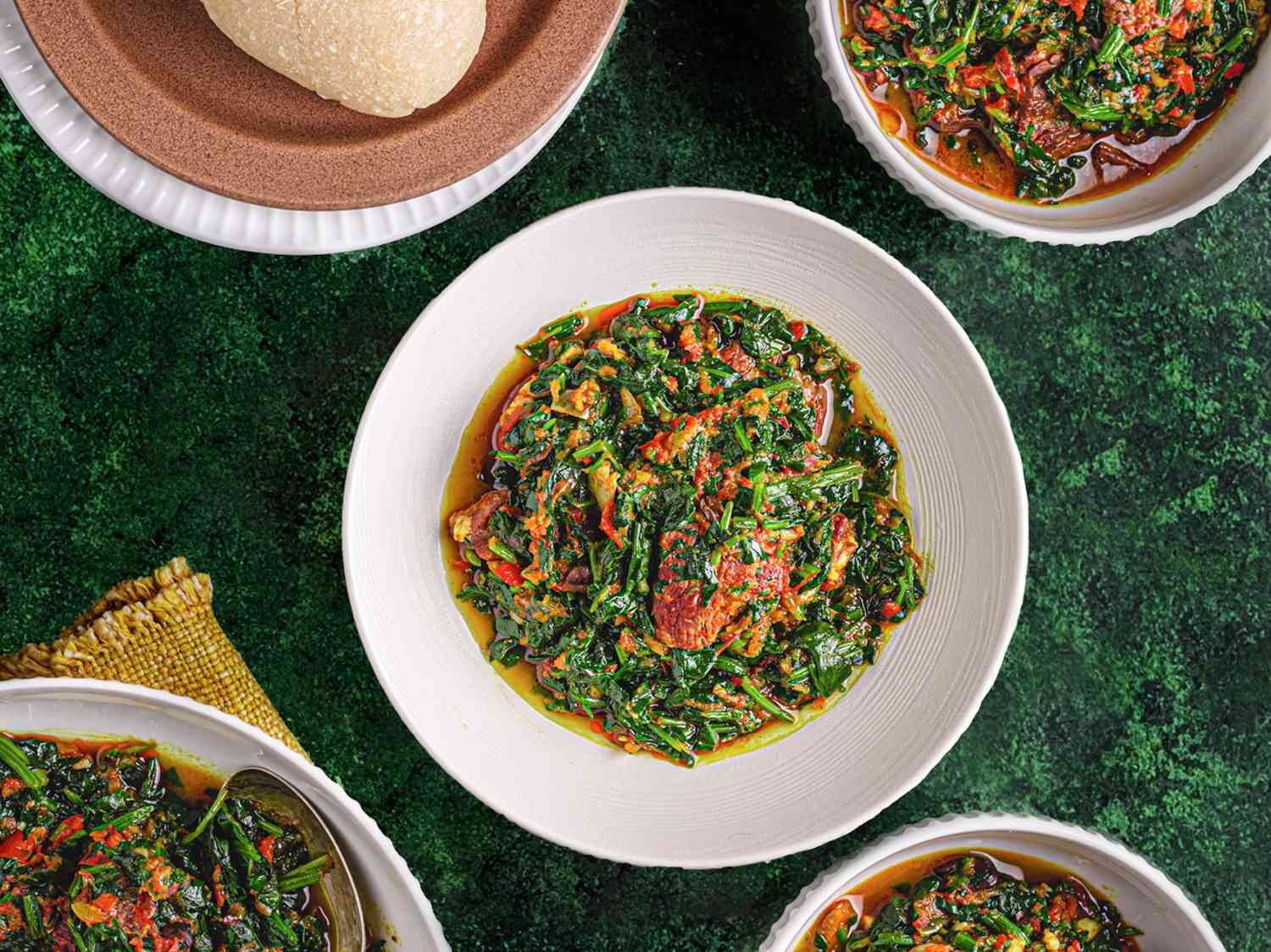The Pungent and Peculiar Story of Nigerian Stockfish
How did Norwegian stockfish swim all the way to Nigeria?
Nigerian cuisine is known for its bold flavors and rich cultural influences, from the fiery heat of Jollof rice to the aromatic spices of suya. But there's one ingredient that stands out for its unique flavor and history: Nigerian stockfish.
Cooked, the texture is unlike that of any other fish. The flesh is firm, with a satisfying chewiness that gives way to a burst of flavor. The aroma of the fish hits one immediately, with its pungent, earthy notes and hints of brine. The saltiness of the fish is balanced perfectly with a slight sweetness, making it a truly unique and unforgettable taste experience.
But we have yet to come across one of the fish’s most memorable attributes. Soft, limp, slack, are words that most commonly come to mind when used to describe uncooked fish. None of these adjectives apply here.
“Dried until it looks like the bark from a tree”
Hard, inflexible, unyielding. Now we are getting closer.
In the Igbo language of Nigeria, stockfish is called okporoko, a word referring to the sound the hard fish makes in a pot. It literally translates as "that which produces sound in the pot".
This strength and durability is not just a characteristic, but a feature of the national delicacy. A feature that has had major historical, societal, and geographical implications through the years.
Originating in Norway, stockfish begins as freshly caught cod, which then proceeds to be dried in wooden racks for as long as 6 months, before being shipped great distances. The both cold and dry climate of the Scandinavian region allows for this special preparation. And because of this lengthy drying process, the lack of sufficient moisture in the fish prevents bacteria and mold from being able to grow. Essentially, if food is or becomes and remains dry enough, it is energetically unfavorable for it to decompose.
And here lies the magic.
Though stockfish, a prized delicacy in and of itself in Norway, its small population of 4 million paired to its massive fish stocks, the country produced far too much for its own consumption. Oddly enough, the only other people partial to stockfish were Nigerians, whose population is close to 63 million. Because it was relatively cheap and the dried fish did not rot in West Africa’s hot, humid climate, there was a brisk trade between the two nations; Source – The Independent, Ireland (https://www.kitchenbutterfly.com/2017/infographic-a-brief-history-of-stockfish-in-nigeria/)
This alternative preservation technique also nullified the need to heavily salt this food to make it last. Various salt taxes implemented during different times in Europe would have allowed for lower production costs to export stockfish.
One would think this is a good enough reason for this superfood to spread far and wide, especially in a premodern era where refrigeration and other preservation techniques were little to none. And spread it did. To a number of other cultures.
The suspension of the Atlantic slave trade and the ultimate abolition of slavery brought an end to the trade, but salt cod continued to flourish. It remained popular in Scandinavia, in Spain and in the Caribbean – surviving in dishes such as bacalaitos (Puerto Rico) and ackee and saltfish (Jamaica). [https://www.historytoday.com/archive/historians-cookbook/history-salt-cod]
Cod which had been transformed into stockfish resisted decay in a manner that was unusual, even unnatural, in the fifteenth and sixteenth centuries. Fourteenth- and fifteenth-century English sources sometimes called it pessoun dure (poisson dur, hard fish), or even winterfish, so-called for its ability to last throughout the cold months when other food had spoiled.[3] Without water it could not rot, mold or putrefy. Where most fish would rot in a matter of days, stockfish could be trusted to last not merely months but years before going bad, and it could be shipped over vast distances. Though coming from Norway and Iceland it was popular as far as Budapest, Rome and Seville. In an age of food insecurity and uncertainty these qualities were much-prized and sought out by consumers, creating a pan-European culture of stockfish cookery by the early sixteenth century. [https://recipes.hypotheses.org/15203]
This alternative preservation technique also nullified the need to heavily salt this food to make it last. Various salt taxes implemented during different times in Europe would have allowed for lower production costs to export stockfish.
Amongst Nigerians, these elements also had direct to indirect influences on its popularity. Great Britain has and still exerts great influence on Nigeria, and generally , colonization has popularized many still existing imports of their culture, such as religion, language (British specific vernacular like parlor and knickers/trouser), and foods (Milo, Digestive biscuits), However, one moment in history helped massively to solidify the place of stockfish in Nigeria's national heritage.
The Biafra war was an incredibly unstable and violent period in Nigeria's recent history. Following independence, Nigeria entered a phase of turbulent politics that was marked by violent leadership transitions and regional tensions, setting the stage for organized violence against the Igbo ethnic group. Death toll rose to over a million during this time. The most harrowing of all however were the child deaths. A terrible disease known as kwashiorkor claimed as many as 50000 lives as a result of malnutrition and protein deficiency. Edwin and Grace, two Nigerians who grew up in and during the time describe their experiences:
Edwin Mofefe:
In the course of three years over a million people died, mostly from hunger. It was a humanitarian crisis of an unprecedented scale, and it was the first time that churches and relief agencies from all over the world, including Norway, joined in to provide emergency supplies, among them, Norwegian Stockfish.I was 5, and of course by the time the war ended, I was 7. There was an old refugee camp where there were hundreds of families. I had to go with my mom to take food to help feed the families there. You would look in their eyes and just say, they're saying 'help me feed me'. I remember the bulging eyes. I can't even describe it. The smells. The most harrowing were the children that I was growing up with, who died because they didn't get enough to eat. They didn't get enough protein and developed kwashiorkor. First their hair would change color, then the stomach would become distended and protruded. Kwashiorkor is a very debilitating malnutrition. It was a feature of that war mainly because of a daily bread war policy to blockade.
Grace Emenoye:
We got food from agencies like the Red Cross and they flew it in to us. One of the protein meals that came in was stockfish, and that was what actually stopped the malnutrition. Because stockfish gave us oil, protein, vitamins. It was used to prepare the soup and we found that the children just blossomed afterwards. You would see a child that had a protruding stomach and the stomach would just begin to go in. Their skin color would begin to change color again. Each time stockfish would come, it was joy
"The single weapon against kwashiorkor was stockfish. And now it's no longer seen as a medicine. But a delicacy"
Food is so much more than what lives on a plate. Food is our history. And in the case of stockfish, it has been our salvation. Though not everyone is a fan of stockfish's strong taste, even those who don't appreciate its flavor can't deny the important role it has played in shaping Nigerian cuisine and culture. From its humble beginnings as a dried and preserved fish, stockfish has become a beloved ingredient that's found its way into the hearts and stomachs of millions of people around the world.


